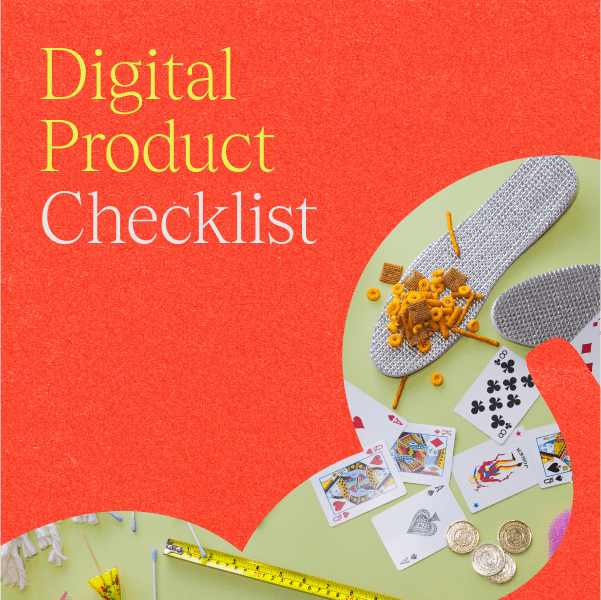Figuring out how to price your digital products can be intimidating. There are a lot of different pricing models out there, and it’s not always easy to know how to crack the digital product price formula. On the one hand, you might want to make your products accessible to as many potential customers as possible to maximize profits. On the other, you’d want to be sure you’re pricing your products competitively and not selling it short.
So, how should you determine the right price for your digital products? In this article, we dive deep into the three most popular strategies for pricing digital downloads, and spill our top tips for pricing your digital products for more sales.
Top 3 digital product pricing models
When it comes to pricing digital products, there’s no one-size-fits-all approach. As you try to figure out the best model for your creator business, use the three popular pricing strategies below as points of reference.
Digital product pricing strategies overview
| Value-based | Cost-based | Competitor-based | |
| Approach | Focuses on understanding the benefits and value of your product over the cost of production. | Straightforward model that sets pricing according to actual production costs. | Pricing is based on competitor pricing strategies. |
| Advantages | Reflects the actual worth of the product to customers. Allows for higher profit margins. | Provides a baseline for pricing. Simple to calculate and implement. | Provides a benchmark for pricing. Helps to stay competitive in the market. |
| Disadvantages | Requires deep understanding of customer perceptions. Can be complex to implement. | Doesn’t take customer perception of value into consideration. Can lead to underpricing or overpricing. | Ignores product differentiation. May not reflect the actual value of the product. |
1. Value-based pricing model

To put it simply, a value-based pricing model is when you emphasize product over quantity. So, instead of pricing digital products according to the cost of their production and distribution, you price them based on what they’re worth.
You might be wondering how you figure out exactly what your product is worth though. Here’s where the whole “value” thing comes in.
How it works
To make this pricing model work, you really need to focus on defining what the value of your product is, and then convince your customers of it.
Think of it this way, a valuable product offers a solution for your audience — whether it’s a mini-course with a treasure trove of knowledge on how to become a creative director, or a helpful guide that teaches you how to manage seasonal depression.
With value-based pricing, you capture the essence of what your audience gains — knowledge, skills, time saved — and price accordingly. This model reflects the inherent value your product offers, allowing you to escape the trap of underpricing or solely considering production costs.
To convince your customers of your product’s value, you want to clearly outline and promote its benefits. For example, a mini-course on job interview tips isn’t just a collection of videos, it’s a “career booster.”
If you’re feeling stumped on how to determine and clearly define the value of your product, a good exercise is to ask yourself some simple questions like:
- What’s special about my product?
- What makes it different from other products offered by creators in similar niches?
- Why would people want to buy my product?
If you’re able to answer these questions, you should be able to clearly communicate to your customer the value of your digital product!
Bottom line
Ultimately, many content creators choose the value-based pricing model because it encapsulates the essence of what their digital products truly offer — value, knowledge, and solutions — making it a great strategy to thrive in what feels like an overly saturated market.
Since you’re pricing your products based on their value — as opposed to the cost of production and distribution — this generally means you can charge above the market average (since, as humans, we usually assume that higher prices imply higher quality). That means you earn more profit in less time!
Keep in mind though that higher prices may also narrow down your target audience. But if you’ve done your audience research, hopefully, that won’t be the case.
2. Cost-based pricing model

A cost-based pricing method is probably one of the most straightforward pricing models, as it sets pricing according to the actual production or distribution cost of a digital product. This pretty much ensures a reasonable price for your product.
How it works
As mentioned, cost-based-pricing is all about pricing your product based on the actual production and distribution cost. That being said, it isn’t as popular of a strategy compared to other models. There are a couple of reasons for this:
- While cost-based pricing takes into account the actual production or distribution cost of your product, it doesn’t factor in all the additional expenses at play, such as website, design and hosting fees, accounting, or the literal time spent creating a product.
- Since this strategy is based on production cost, there’s a pretty high risk that you might end up underselling your digital product.
Yes, when it comes to cost-based pricing, you don’t need to do as much customer, competitor, or market research. But if there’s data out there that can help inform your pricing strategy, it makes more sense to collect and build your pricing model around it.
Bottom line
If you’re just getting started in the digital product universe and don’t really know who your customers are yet or what they’re willing to spend on a digital product, then a cost-based pricing model may work for you.
Whether you choose the cost-based model or not, it’s always in your best interest to conduct market research and spend some getting to know your target audience!
3. Competitor-based pricing model

A competitor-based pricing strategy involves setting prices based on what similar products on the market are worth. This strategy can be appealing to use because it provides a reference point for content creators to establish their pricing. If you’re new to the scene and have no idea where to start, you might lean towards competitor-based pricing.
How it works
As mentioned, the competitor-based pricing strategy is about researching what similar products out there cost and setting a competitive price for your product. However, keep in mind that this model has both advantages and drawbacks.
On one hand, aligning prices with competitors can offer your customers a level of assurance, and may attract buyers who are comfortable with existing pricing standards for similar products. On the other hand, relying solely on competitor-based pricing might undersell the unique value of your content.
So if you’re deciding to go this route, consider whether your product offers significantly more or different benefits than existing products on the market. Mirroring competitors too closely might undermine its true worth.
Another thing to keep in mind with this pricing strategy is that the digital landscape evolves rapidly and market dynamics vary, so basing prices solely on competitors might not ensure ongoing competitiveness.
Bottom line
If taking this route, you should blend insights from competitor prices with considerations of your product and your audience’s uniqueness. That way, you’re able to strike a pricing balance that accurately reflects the worth of your digital offerings.
8 Tips for pricing your digital products
Read on to discover some tips and strategies for increasing your sales and making even more of that sweet, sweet passive income.
1. Research your audience

If you’re feeling lost and don’t know where to start, researching your audience is the most important first step. The goal of this research is to find out just how much your audience is willing to pay for your digital products.
Knowing how much your audience expects to pay for a product will help you match their expectations. For example, if your audience expects to pay no more than a maximum of $10 for a budgeting template, and you’re charging $50, chances are that the pricing structure won’t work too well in your favor.
Reverse that scenario and say you charge $10 for a template when your audience assumes to pay a minimum of $50, and they might write off your template as low-quality and decide not to purchase it.
For this reason, knowing your audience is so important. But how exactly do you get to know them?
Conduct a demographic survey
A demographic survey helps you gather information about your audience’s social characteristics like income level, occupation, age, etc. While a survey can feel a bit formal — and it might not be the right discovery point for every content creator — there are creative ways to gather this information.
For example, you can create a questionnaire in a free form builder like Google Forms. And instead of asking your audience outright, “What’s your income bracket?”, consider rephrasing the question to, “Is it ridiculous to spend $30 on a nice plate of pasta?” An enthusiastic “No!” or a hard “Yes!” says a lot about someone’s disposable income.
However you decide to survey your customers, the goal here is to get an idea of your audience’s spending habits, which will help inform how you should price your digital products.
Analyze your audience’s pain points
Another important aspect of understanding your audience is to know, and we mean really know, their unique needs, preferences, and pain points. By doing so, not only does it enable you to craft a high-value product, but it also helps you understand what your audience might be willing to pay to address their pain points.
Once you’ve located what your audience’s pain point is, you’ll want to consider just how badly they want to solve it. If it’s only a modest inconvenience or mild existential crisis, they might not be willing to pay that much to address it. Alternatively, if it’s causing major stress in their life, it’s likely that they will be more willing to invest in a solution.
Wondering how to research your audience’s pain points? Take this mini-course by creator Juan Galán, where he shares his best tips for planning digital products.
2. Create a lead magnet

It may seem totally backward at first, but a smart pricing strategy for increasing your digital product sales is to create a free piece of content, also known as a lead magnet.
A lead magnet is a valuable piece of content that creators provide to potential customers in exchange for their contact information, with the goal of attracting and nurturing leads within their target audience.
There are a couple of reasons why offering lead magnets can help you with pricing your digital products. For starters, a lead magnet helps you build a direct relationship with your audience by giving them something of value. In return, this helps you build an audience and track customers outside of social media platforms, which are notorious for having fickle algorithms.
Secondly, a lead magnet gives you the opportunity to give your potential customers a taste of the kind of valuable content that you bring to the table. Once they’re hooked, you can encourage your customers to move up the value ladder to purchase higher-priced products.
3. Consider tiered pricing

A tiered pricing approach helps to diversify your options while catering to a broader audience. For example, you might have thousands of loyal followers, but only a handful of them are in a position to pay more than $25 for a digital product.
Offering your customers options will greatly improve the chances of more sales. For example, as a personal finance coach, you can offer mini-courses and more comprehensive online courses on the topic at different pricing tiers.
Keep in mind that when presented with different prices, customers usually lean towards the mid-range option. This is because each tier offers distinct value; the lowest might seem less valuable, while the highest could be a bit too pricey.
Providing tiered pricing allows you to show your customers that you understand there’s no one-size-fits-all option when it comes to pricing, and you’re committed to meeting them where they’re at.
Create a low-priced product
Low-priced products are the perfect starting point for getting your cash flowing. If you’ve already offered your audience a lead magnet, follow up that offer with something of more value at a low price. We’re talking about valuable mini-courses, tutorials, or guides that are simple to make. Anything that will inspire your audience and keep them hooked!
Create a higher-priced product
It may seem cliched, but when it comes to offering higher-priced products, slow and steady wins the race. Now that you’ve already offered some lead magnets and/or low-priced products to gain your audience’s trust, you’re ready to graduate to higher-priced products like a more robust mini-course or a fully-fledged online course.
The ultimate pro tip here is if you want to get more serious money rolling in, start selling products with even more value at a higher price.
4. Consider a subscription pricing model

Rather than a one-time sale, a subscription-based pricing model focuses on building a relationship and a steady stream of income.
Subscriptions offer customers continuous access to your product, creating an ongoing value loop for both sides. Instead of a single purchase, customers sign up for recurring access, ensuring consistent income for you while providing them with consistent content.
Moreover, subscriptions build loyalty and commitment. Customers invested in your product are more likely to stick around, explore more of what you offer, and become bigger brand advocates.
If it makes sense for you and your content creator career, subscriptions can become a reliable income for you and an evolving, valuable experience for your customers. Ultimately, it’s a sustainable way to grow your digital product’s presence and profit margins in the long run.
5. Carefully calculate costs

Whatever pricing model you decide on for your digital products, it should cover your cost of production at the very least, i.e., don’t forget about fees and expenses.
Your expenses will largely be determined by the digital product builder you use. Free, or low-cost, platforms like The Leap or Thinkific offer you the ability to create and sell digital products quickly and inexpensively.
Step 1: Add up direct costs
Direct costs represent any expense related to production. That could be personal website hosting, software subscriptions, or freelancer fees. Sometimes these costs can seem so inherent to your spending — or like quick blips on your credit card bill — that they might not seem a part of the actual cost of your digital product, but it’s important you consider them.
Step 2: Calculate indirect costs
Indirect costs represent expenses that are not necessarily tied to a specific product but contribute to the overall production process. Think internet bills, music subscriptions, electricity bills. Yes, at first, this might all seem extra to include in your pricing strategy. But for example, as a content creator, the cost of the internet is a production expense and can be factored into your overall digital product cost, if you choose to do so.
FYI: We’re not saying you should charge your customers your monthly internet fee on top of each product sale. Think of it as more of an overall consideration when designing your pricing strategy.
Step 3: Add up fixed costs
The operating expenses of your creator business are things like taxes, insurance fees, interest on loans, and other administrative expenses. Say, for example, you borrowed money to take a course or workshop in your particular field of expertise. The interest on that loan would be a fixed cost.
Step 4: Add up all costs
Add all the costs together to get your total cost of production. Let’s say your total costs look something like this:
- Indirect costs: $1,000
- Direct costs: $500
- Fixed costs: $500
Since the total is $2,000, that means you need to sell at least $2,000 worth of your digital product to cover your expenses and break even. So, if you’re thinking about producing and selling a mini-course at $25, you would need to sell your mini-course 80 times before you break even on your total costs.
To set realistic expectations for yourself, it’s helpful to do this math beforehand!
6. Consider bundle deals and upsells

As a content creator, bundles and upsells can be a real game changer for your product sales. By combining related products into one package, bundles offer added value and convenience at a “bundled” price.
For example, bundling an ebook with complementary guides, or pairing a mini-course with exclusive access to templates is a win-win for customers seeking more bang for their buck.
Upsells are a smart marketing strategy for amplifying the ROI of your lead magnet offers and beyond. For example, after a customer signs up for your free mini-course, you can entice them with an upsell for a premium ebook or a deeper dive into a related advanced course. It’s all about providing that extra value at the right moment, elevating your customer experience while boosting your sales.
The key to bundle and upsell success? As always, know your audience and their needs. Tailor bundles and upsells to complement their purchase, offering solutions or enhancements that will actually amplify their experience and knowledge.
Done right, bundles and upsells can elevate your sales game, pull in your audience, and expand your offerings all at once.
7. It’s all about your customers’ time, not your time

Ready for some harsh truths? Okay, so we all know that a lot of time and effort goes into content creation. Everything from ideating, writing, designing, filming, sourcing equipment, etc, etc. It can be tempting to write all of this time into the end cost of your product.
But before you do, consider this: most people won’t care about the time and effort you’ve put into a product that they buy from you. What your customers are thinking about is how much time your product can save them.
Focus your efforts on thinking about what value your product brings to your customers and communicate that to them. When it comes to digital product creation, you can save both your customers and yourself some time (and money) with easy-to-use tools like The Leap, which can help suggest topics and generate drafts for digital products like mini-courses, guides, challenges, and tutorials.
8. Don’t sell yourself short

In other words, don’t underestimate yourself or your digital product! Just because something may seem easy to produce one time, that doesn’t mean it isn’t bringing tons of value to your customers.
It can be difficult to know how to price your courses, ebooks, or templates for sale, but remember that the number-one step when doing so is to consider what value you’re bringing to the table.
If you’ve conducted thorough audience research, chances are you have a pretty good idea of what type of product is going to solve your customer’s pain points.
Ready to make bank by selling digital products?
It’s time to elevate your pricing game and witness the surge in sales firsthand. Try The Leap, an AI-powered digital product builder that helps you create mini-courses, guides, and more in minutes. Got an existing digital download to sell or a lead magnet to give away? No problem. The Leap also doubles as a link-in-bio storefront tool, allowing you to easily add any product or freebie to your store. Create your free account today!
New to selling digital products? Get our free Digital Product Launch Checklist for tips to start on the right foot!
FAQ
How do you calculate the optimal price for a digital product?
Figuring out how to price digital products like templates, ebooks, guides, and courses involves a bit of a nuanced approach.
First, understand your target audience and their willingness to pay for a product. For example, if your audience is largely college students with limited income streams, you might want to consider offering a lead magnet to introduce them to the value of your products before offering priced options.
Of course, when considering the pricing of your digital product, you’ll want to factor in production costs and time invested. Using a free, AI-powered digital product builder like The Leap can help you save not only a bunch of time, but also costs for producing your digital downloads.
You can also experiment with tiered price points, and make sure to regularly assess and adapt your pricing strategies based on market trends and your customer feedback to strike that perfect balance between value and affordability.
What are the most profitable digital products?
The most profitable digital products often include online courses (including mini-courses), subscription-based services, and software tools. Courses offering specialized knowledge or skill development are always in high demand. Subscription services create recurring revenue streams for content creators, while software tools catering to specific needs or streamlining tasks tend to be highly lucrative.
Ebooks, templates, and digital art also hold major potential, leveraging their scalability and wide audience appeal for higher profit margins.
Ultimately, whatever product you decide on, the key lies in offering unique value, solving problems, or fulfilling niche demands.
Follow The Leap on TikTok, Instagram, and YouTube for more monetization tips for creators. We also make a newsletter.





